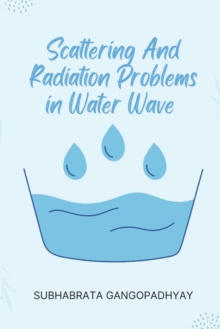Scattering and radiation problems in water waves refer to the physical phenomena that occur when water waves encounter objects or boundaries, such as ships, shorelines, or underwater structures. When waves encounter these obstacles, they scatter and radiate, causing changes in the direction, amplitude, and frequency of the waves.
One of the most important applications of scattering and radiation problems in water waves is in the study of coastal engineering and offshore structures. Understanding how waves interact with these structures is critical for designing and constructing coastal infrastructure, such as breakwaters, sea walls, and offshore oil rigs. By simulating the scattering and radiation of waves, engineers can design structures that can withstand the forces of the ocean and protect coastal communities from the damaging effects of waves.
Scattering and radiation problems in water waves can also be used to study the behavior of marine ecosystems. Waves play a critical role in the transport of nutrients, sediments, and plankton, which are essential components of marine food webs. By studying how waves scatter and radiate around these materials, researchers can better understand how marine ecosystems function and respond to environmental changes.
One of the most common methods for studying scattering and radiation problems in water waves is through mathematical modeling and simulation. These models use a combination of physical principles, such as fluid dynamics and wave theory, to predict how waves will interact with different types of obstacles and boundaries. By comparing the results of these simulations with experimental data, researchers can refine their models and improve their understanding of wave behavior.
Overall, the study of scattering and radiation problems in water waves is critical for understanding the complex interactions between waves, structures, and marine ecosystems. By developing more accurate models and simulations, researchers can improve our ability to predict and manage the impacts of waves on coastal communities and marine environments.
'Fluid dynamics' is one of the most important parts of the recent interdisciplinary
activities concerning engineering and science, especially in applied mathematics. Fluid dynamics or
hydrodynamics is the branch of science which is concerned with the study of the motion of fluid or
that of bodies in contact with fluids.
Water waves are the undulatory motion of a water surface. The continuous transference of a
particular state or form from one part of a medium to another with certain velocity of propagation
without any displacement of the medium itself executes wave motion in the medium. Study of various
types of wave problems in ocean constitutes an important branch of fluid dynamics as it
enables us to understand various natural wave phenomena occurring on the ocean
surface a well as inside the ocean. If we throw a stone in a pond we observe waves in the
pond which start from the point of striking of the stone and spread in all directions. Such waver
waves are also produced by pressure of wind upon the surface of water, by the relative motion of
bodies like a ship moving
in sea and by obstacles in the bed of the stream.

